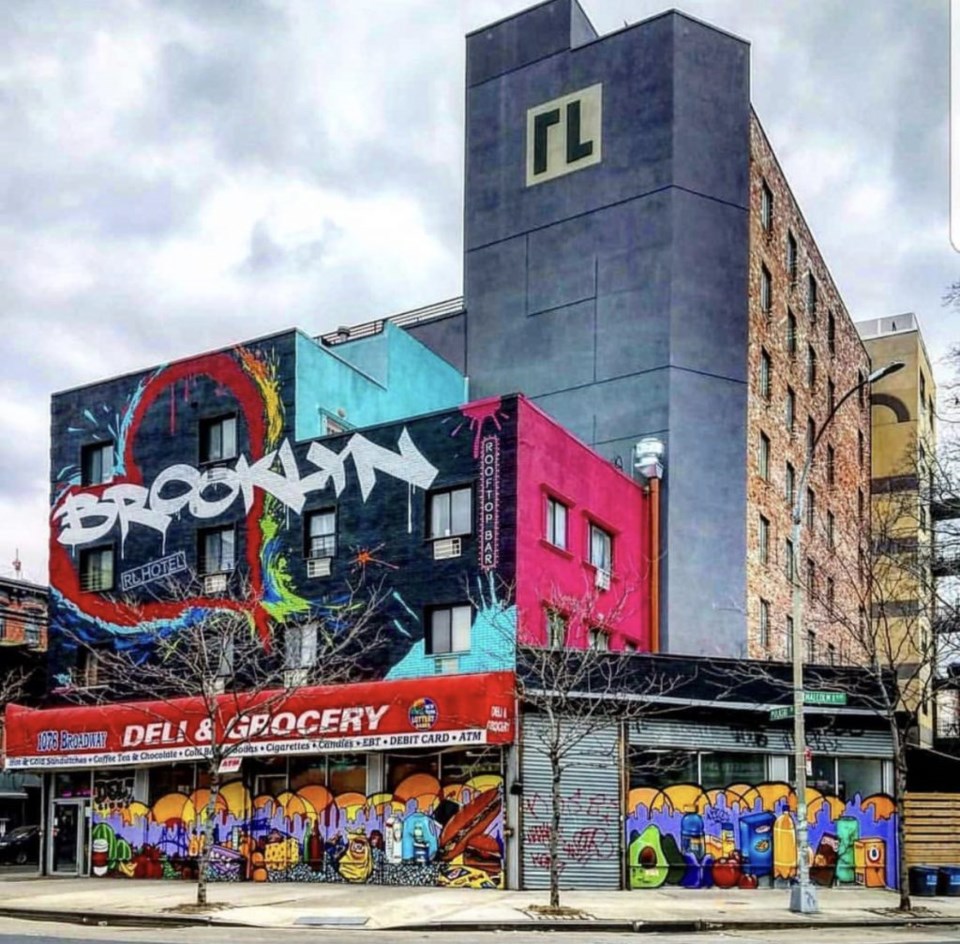How much has the proliferation of the street art in Bushwick played a role in the acceleration of the neighborhood's gentrification?

A study conducted by the rental listing website RentCafe.com this past February listed Bushwick among the top 20 fastest-gentrifying neighborhoods in the United States: From 2000 to 2016, average home values in east Brooklyn neighborhood jumped from $273,563 to $576,572, an increase of more than 100 percent.
Consequently, during this same period, the presence of street art around Bushwick also has exploded. In the past decade, the neighborhood now boasts the highest concentration of murals and graffiti art lining the walls of its warehouses, abandoned buildings commercial storefronts and even some public schools. These beautiful and expansive murals have been painted by some of the most respected, up-and-coming artists from around the world, part of a large and ever-growing graffiti exhibition known as The Bushwick Collective.
Now that street art no longer is considered sign of urban blight and has been designated the new cool kid on the block, how much of its presence can be tied to the acceleration of the area's gentrification? Or is it tied at all?

Some real estate companies are using BC's exquisite murals blatently to court its clientele. On the websites of Bushwick's recently established luxury apartment buildings, CastleBraid, located at 83 Bushwick Ave and 1209 Dekalb Ave, the developer advertises specifically to the "creative professional," marketing Bushwick as the "new creative epicenter," while boasting the area's "photogenic, graffitied streets."
NYU Social and Cultural Analysis Associate Professor Thuy Linh Tu said this approach to marketing a neighborhood goes hand-in-hand with onset of gentrification.
"I think Brooklyn follows the pattern of many other places that have gentrified," said Tu. "Largely low-income, largely ethnic neighborhoods get taken over by white creative types. Gentrification is really about bringing in new capital into spaces, and it often leads to the displacement of people, particularly poor people of color."
According to a study released as part of the NYU Furman Center's 15th annual State of New York City's Housing and Neighborhoods in 2015 report, from 2000 to 2016, the percentage of residents who identify as black or Hispanic both decreased while the residents who identify as white and Asian increased. The black population decreased by 5.1%, the Hispanic population fell by 7.3%, the Asian population rose by 2% and the white population increased by 11.7%.
"I think Brooklyn follows the pattern of many other places that have gentrified. Largely low-income, largely ethnic neighborhoods get taken over by white creative types."
Some brands and advertisers also are benefitting from the proliferation of the area's street art. This past Saturday, during the Bushwick Collective's 7th annual block party, dozens of businesses, local and international, promoted their products to the approximately 2,000 attendees, all of whom were eager to gather and take photos in front of the dozens of freshly painted new murals.

Long Island native Reme Rowland, a muralist at the Bushwick Collective block party, expressed concern around the area's rapidly changing demographic and lamented the corporations that have made money off of the murals donated by the artists to the community.
"I wouldn't tie the economic boom of Bushwick to street art. There's a supply constraint in general across all of New York, so I wouldn't really relate it to street art."
"Bigger corporations have started advertising on metal signs, above or on top of the murals that street artists have done," said Rowland, while adding streaks of fuchsia to his wall during the block party. "They know people are going to come to take pictures here and they are probably trying to stay relevant. Companies and real-estate owners are using the foot-traffic that the artwork and the music bring to their advantage."
Harley Courts, CEO of Nooklyn, an apartment rental listing company based in Bushwick, says there are a lot of other factors contributing to the gentrification of Bushwick. But he rejects the notion that street art is one of them.
"I wouldn't tie the economic boom of Bushwick to street art," said Courts. "There's a supply constraint in general across all of New York, so I wouldn't really relate it to street art."
Courts helped Bushwick Collective Founder Joseph Ficalora throw the BC's first block party six years ago by arranging a musician line-up of his friends. The real estate tech company has since sponsored six of the seven block parties thrown by BC.

"I don't think the Bushwick Collective has affected the housing market," added Courts. "It is supply that affects the housing market. For me, running Nooklyn, I know that we have to be focused on creating enough supply to drive down cost. That is, I think, the biggest factor right now."
And not all of Buswhick's residents see the neighborhood's street art as a problem either: Leo Tineo, a native of Bushwick, promoted his street art-themed bar at the block party and welcomed the increased foot traffic.
"Unfortunately, prices have gone up and a lot of people can't afford to live here anymore," Tineo said. "Gentrification is unfortunate; it's a train that can't be stopped. It's when you don't accept your local neighbor that it becomes a problem. As long as nobody has a problem with me and my Dominican roots, we're okay."



.png;w=120;h=80;mode=crop)
